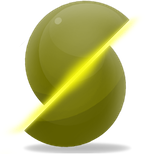 Slic3r Manual
Slic3r Manual
 Slic3r Manual
Slic3r Manual
Slic3r supports STL, OBJ, AMF formats. This document shows what each format carries and what is supported by Slic3r.
| Supported in Slic3r | |
|---|---|
| Materials | NO |
| Textures and .mtl files | NO |
Materials in AMF format are properties of the volumes not just like OBJ format. They carry information about the nature of the surface. These are examples of the materials in AMF XML structure.
<material id="1">
<metadata type="Name">StiffMaterial</metadata>
</material>
<material id="2">
<metadata type="Name">FlexibleMaterial</metadata>
</material>
<material id="3">
<metadata type="Name">MediumMaterial</metadata>
<composite materialid="1">0.4</composite>
<composite materialid="2">0.6</composite>
</material>
<material id="4">
<metadata type="Name">VerticallyGraded</metadata>
<composite materialid="1">z</composite>
<composite materialid="2">10-z</composite>
</material>
<material id="5">
<metadata type="Name">Checkerboard</metadata >
<composite materialid="1">
floor(x+y+z%1)+0.5) </composite>
<composite materialid="2">
1-floor(x+y+z%1)+0.5) </composite>
</material>This Example is a taken from the Wikipedia example but it's more simplified
<?xml version="1.0" encoding="utf-8"?>
<amf unit="inch" version="1.1"> <!-- All elements should be contained in the <amf> element -->
<metadata type="name"></metadata> <!-- Metadata element -->
<object id="1"> <!-- Object element with identifier -->
<mesh> <!-- Mesh inside an object -->
<vertices> <!-- Mesh Vertices -->
<vertex><coordinates><x>0</x><y>0</y><z>0</z></coordinates></vertex> <!-- A Vertex (x, y, z) coordinates -->
</vertices>
<volume materialid="1"> <!-- Volume having material with an identifier -->
<metadata type="name">Hard side</metadata> <!-- Metadata element -->
<!-- Triangular Mesh consits of three vertices from the mentioned above in the mesh vertices elements -->
<triangle><v1>2</v1><v2>1</v2><v3>0</v3></triangle>
</volume>
</mesh>
</object>
<material id="2"> <!-- Material element -->
<metadata type="name">Hard material</metadata>
<color><r>0.1</r><g>0.1</g><b>0.1</b></color>
</material>
</amf>| Supported in Slic3r | |
|---|---|
| Materials | YES |
| Metadata | YES |
| Curved triangles | NO |
| Constellations | YES |
| Textures | NO |
when writing AMF files, we save additional data which are: * Print configuration for each object and each Material. * Print configuration for each volume and whether it's a modifier volume or not. * Slic3r version in each metadata element in objects, materials, and volumes